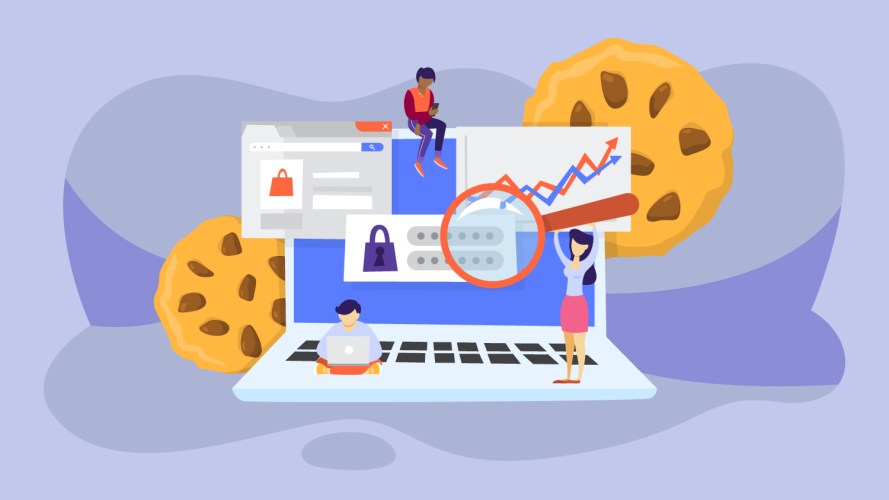
Meta’s Solution to a Cookie-less Future
By Calen Bacy / Marketing, Technology
Wait, what’s happening to cookies? And more importantly, what are cookies? Cookies are small pieces of code that are placed in your browser when you visit a website. They usually contain at least two pieces of information – a site name and unique user ID – but they may also capture other details such as website configuration login details, or products added to a basket. In simpler terms, it’s the ad that’s following you around your browser.
In January 2020, Google announced its plans ‘to phase out support for third-party cookies in Chrome… within two years.’ Now that it is 2022, the phase-out begins, and all major browsers (Google Chrome, Firefox, Safari) will have blocked the use of third-party cookies. This will definitely alter the landscape for digital advisors who currently rely extensively on third-party cookie data for ad targeting personalization. Advertisers and agencies will need to prepare and adapt their strategies to changes in third-party data capturing.
So what does this really mean?
Well, for consumers, the ban on third-party cookies will give them more control over the data they share with companies online. Consumers will also be able to better manage and understand which companies capture their behavioral data. The downside is that the personalization of a web experience could become less common, with more irrelevant or ‘boring’ ads being shown. If you are an online shopper like me, then you know what it means to see an ad for a service and product that is perfect for you!
For agencies and advertisers, as an immediate effect after the implementation of the ban, most third-party cookie audiences will diminish in size due to cookie expiry—until they are no longer sufficiently scalable for most media buying activities. This means that advertisers will need to develop new strategies for prospecting and rely more heavily on other tactics. Advertising data processing and selling organizations will need to develop new ways to collect and aggregate audience data that do not require third-party cookies.
However, there is no need to panic. Individual advertising platforms will now take it upon themselves to create more in-house data integrations for their platforms. Such as Facebook…I mean Meta.
Meta’s Alternative to Cookies
The iOS 14 update highly restricts the use of cookies for tracking on Apple mobile devices, which excludes a very large group of Team iPhone users. That means the Pixel alone will give you a lot less information about how iOS users interact with your business. This is the reasoning for the creation of the Conversions API tool that helps advertisers use their own marketing data to optimize ad targeting, decrease cost per action and more accurately measure campaign outcomes. Just like our other business tools, the Conversions API is built to honor people’s privacy preferences. And since the Conversions API is less dependent on browser technologies than the pixel, it can help both improve your performance today and safeguard your performance as browser technologies become less effective in the future.
Conversion API Features
Increase data control.
When implemented separately from the Meta pixel, the Conversions API gives you more control over what you share and when you share it.
Limit data loss.
Share important purchase activity directly from your digital storefront to Meta technologies and help strengthen the reliability of data available for measurement, ad optimization, and audience development.
Get access to advanced sharing settings.
New Data Sharing settings give you more options for sharing customer data with Meta in one easy click or tap.
Improve ad measurement.
The Conversions API can help you better measure ad performance and attribution across your customer’s full journey, from discovery to conversion. This helps you better understand how digital advertising impacts both online and offline results.
Drive better ad performance.
Data from the Conversions API is less impacted than the pixel by browser loading errors and connectivity issues. When you use the Conversions API alongside the pixel, it creates a more reliable connection that helps the delivery system decrease your cost per action and deliver more personalized ads.
Optimize for the outcomes that matter to your business.
With the Conversions API, you can optimize for lower funnel events that better reflect your business goals. For example, you can optimize for subscriptions, lead quality and custom web events.
Conversion API Tracking
You’re probably wondering where this leaves you in terms of tangible tracking. With Conversion API, you can track three kinds of data:
- Web conversions (like sales or signups)
- Post-conversion events (retarget leads)
- Page visits (all web page data)
It’s said to give better insights into your full sales funnel rather than the pixel and their events. That’s because it allows you to incorporate information like CRM data and qualified leads. It also provides data required for:
- Better conversion optimization for ads
- Ad targeting (custom + retargeting audiences)
- Ad reporting + audience insights
- Dynamic ads
Tips on Connecting the Conversion API
Use your web developer.
Do not, and I repeat, DO NOT attempt to install this on your own. The instructions are a bit complicated, and doing so wrong could actually lose you exponential time in the long run. You’ll more than likely find yourself in the que of tons of Facebook support chats, wondering why you didn’t listen to the blog that warned you. For best results, find a web expert.
Choose what data to share.
When deciding what data to share, it’s important to review the terms and policies that apply to your business and look at the ways you interact with customers. Clarifying your marketing objectives and the outcomes that matter most to your business can help identify what data to share.
Tell users how their data is being used.
You’ll need to obtain any necessary consent for the information that’s shared through the Conversions API. Design explicit experiences on your websites that help educate customers on how their data is being used.
Ride the digital waves.
With ongoing change in the digital world, the key is to always match that change with your digital strategies. For example—if you are spending even a penny on Facebook or Instagram advertising, I do recommend switching over from pixel and events tracking to Conversion API. It is the best way to ensure you are collecting as much usable data as possible.
Feel like you need a Facebook ads expert to handle your transition into the cookie-less future? We’ve got you covered! Our agency has full Facebook Partner Status and ad experts with 10+ experience in the industry. You know where to find us!
Reference Links

